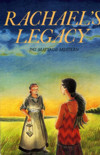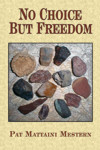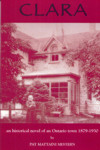A Titanic Story
The Titanic and Fergus:
When hubby and I were first married we moved into a upper floor apartment that once was the servant’s sleeping quarters in a large, impressive house that had belonged to John and James Beattie. It is a red brick beauty that still stands on the east corner of Queen and St. David Streets in Fergus. On one of the walls of the back stairs which led down to another apartment, there was one sentence – “Terrible day, April 15, 1912″. Obviously one of the servants was very much affected by the sinking of the Titanic.
Thomson Beattie, was the last child born to John Beattie and Janet Wilson. He and his siblings, born over a twenty-four year period, were Mrs. Alex Milne, Mrs. Alex Burns, Mrs. Hugh Black, Mrs. William Murray, John T., James, George, Mrs. Robert Phillips, Charles M., Frederick and Thomson. All were born at “Belsyde” the former home of the Ferrier family, a c1836 limestone dwelling which still stands on Queen Street E., although now wedged between private homes and apartment buildings. John, realizing that he was no longer a young man and possibly wouldn’t be capable of taking care of himself and his wife, went into a partnership with his son James and together they financed the construction of beautiful red brick “mansion” during the 1880’s. John and his wife were able to enjoy the new dwelling which they shared with his son until 1897 when John died.
After his father’s death James took over the duties of Clerk for the County of Wellington and also took over complete ownership for the house. Thomson, the youngest of the family took his share of the estate and moved to Winnipeg where he went into real estate with a partner, Richard Waugh under the name the Haslem Land Co.
When in January 1912, Thomson along with three friends, Thomas McCaffry – sometimes spelled McCaffrey, John Hugo Ross and Charles Hargraft decided to enjoy a three month holiday in Europe, Thomson’s mother, who was known for being “fey” was not ecstatic about the sojourn. It was not the trip through Europe but the sea voyage that most bothered her. Although she spoke to Thomson about the possible perils of that journey, the men ventured forth. Clara Young wrote in her 1912 journal that Mrs. Beattie said – “It is a collision of my birth and Thomson’s voyage that I do dread.”
Of the four, Hargraft was the lucky fellow who, due to lack of money cut his vacation short in Paris and returned to Canada while the others toured the Middle East, Egypt, France and finally England. In March of 1912, Thomson sent a note to his mother – “We are changing our plans and coming home in a new, unsinkable ship”. Possibly he felt that he would set his mother’s fears to rest by assuring her that they had obtained passage on an unsinkable ship. Unfortunately, that ship was the Titanic. Thomson, Ross and Thomas McCaffry paid 75 pounds, 4 shillings and 10 pence each for first class passage on the new ship. Beattie’s cabin was C6. His ticket number was 13050.
Of course, we all know what happened to the Titanic. The story of its sinking and subsequent loss of lives is legendary. Ross died in his bed. McCaffry drowned. His body was picked up by the cable repair ship the MacKay-Bennett and subsequently buried in Notre Dame des Neige Cemetery in Montreal. But Thomson Beattie did not drown at sea. From visual reports it is thought that he and McCaffry were clinging to the roof of the officer’s quarters near collapsible A lifeboat. The officer’s quarters were located on the top deck just behind the first funnel. As the ship lifted and plunged toward its final resting place on the bottom of the ocean, so many people clambered to get aboard the collapsible boat that it became partially submerged. Beattie who climbed aboard alive, froze to death in the cold water in the bottom of the boat.
Lifeboat A floated on the ocean for four hours before it was found by Lifeboat 14 whose commander, Officer Harold Lowe took aboard all the live survivors. Unfortunately Beattie and two crew members were ascertained to be dead and left behind. Officer Lowe tried to sink the collapsible lifeboat but failed so left the scene. It would be one month before the boat was sighted again, the three bodies found, and buried at sea – after personal belongings were retrieved from the corpses. Their bodies were assigned numbers #331, #332 and #333. One of the items brought to shore was Thomson Beattie’s watch which now resides in Wellington County Museum. The boat was discovered two hundred miles southeast of the site of the sinking of the Titanic. It was here that the three bodies were buried, in the almost the same spot that Thomson Beattie’s mother, Janet Wilson was born in 1830 when her family emigrated to Canada. Janet Wilson Beattie’s premonition was all too true. All she was capable of writing to Clara Young was “I knew. I knew.”
- Uncategorized
- Comments Off on A Titanic Story








